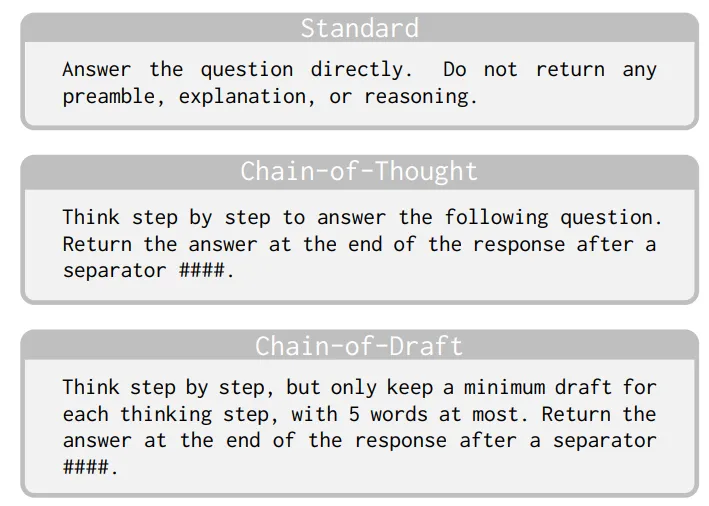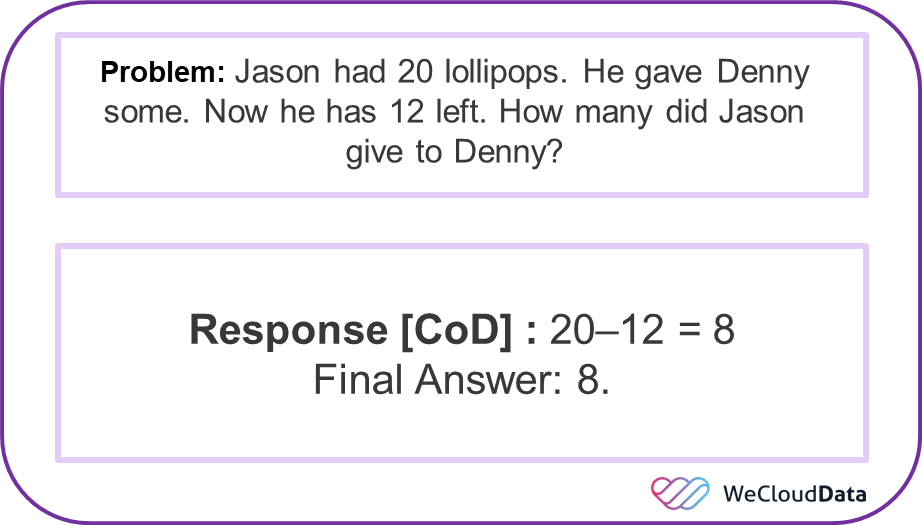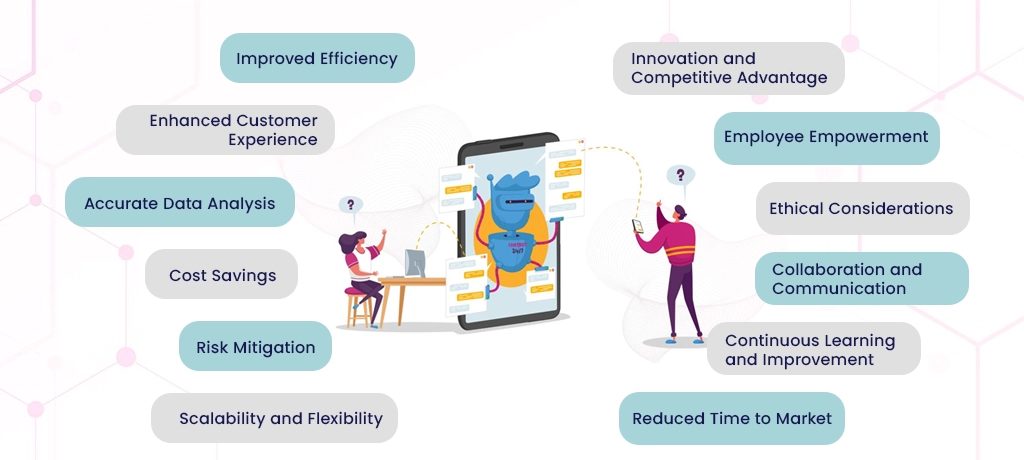Prompt engineering is one of the most powerful tools for getting the best results from large language models (LLMS). Good prompts generate desirable outcomes from Generative AI models. There are multiple prompt engineering techniques to use. One of the most well-known techniques is Chain of Thought (CoT) prompting, where the model is instructed to break down a problem into detailed, step-by-step reasoning. While CoT is effective, it also creates lengthy responses. That’s where Chain of Draft Prompting (CoD) enters the game. CoD is a method designed to “think faster by writing less”.
This blog briefly introduces the Chain of Draft Prompting (CoD). If you’re new to Prompt Engineering, check out WeCloudData’s introductory post on Prompt Engineering here to familiarize yourself with the concept. Let’s get started!
What is Chain of Draft Prompting?
Inspired by how humans solve complex tasks, Chain of Draft (CoD) prompting is an innovative method to reason in large language models (LLMs). CoD concentrates on delivering brief, concise, critical insights at every step, unlike lengthy, sequential explanations that the Chain of Thought prompt (CoT) method produces. By utilizing fewer tokens and decreasing latency, this minimalist technique enables LLMs to move closer to solutions more quickly while increasing accuracy.
Quoting from the research paper published by Zoom Communications, “Chain of Draft (CoD) is a novel prompting strategy where LLMs generate minimalistic yet informative intermediate reasoning outputs while solving tasks.” This means:
- Less verbosity: No excessive explanations.
- Fewer tokens: Lower computational cost.
- Faster responses: Ideal for real-time applications.
Here is the link for the research paper” Chain of Draft: Thinking Faster by Writing Less”.
Chain of Draft Prompting (CoD) Strategies
The Chain of Draft approach depends on the following strategic principles:
Human-inspired design: Mirrors natural problem-solving patterns where only critical information is recorded.
Concise Intermediate Steps: CoD concentrates on producing dense, compact outputs for every reasoning step that only include the necessary information to proceed. CoD enables GAI models to solve problems with minimal details.
Cognitive Scaffolding: CoD projects important ideas without resorting to the verbosity that usually slows down GAI models, just like humans utilize shorthand to keep track of their thoughts. The objective is to avoid overstuffing the model with tokens while preserving the integrity of the reasoning process.
Mimic Human Notes: Take inspiration from how humans write outlines or quick bullet points. CoD is targeted minimalism, which eliminates unnecessary details without sacrificing logic.

Practical Example: Solving Problems with CoD
Let’s examine how different prompting approaches handle a simple arithmetic problem:

We will check the results of three prompt techniques and compare them with the CoD results.
Standard Approach: The standard approach answers the question directly, with no explanation or reasoning involved.

Chain-of-Thought Prompting: Chain-of-thought prompting breaks down a complex question into smaller, manageable, logical parts resembling a train of thought. Involved lengthy responses.

Chain-of-Draft Prompting: Chain of draft technique requires minimal essential steps

Why is CoD Better than CoT?
The chain of draft and the chain of thoughts are both very powerful prompts for engineering techniques. Here are some points that give CoD an edge over CoT.
Same accuracy, fewer tokens: CoD is computationally faster and less expensive than CoT since it attains almost the same accuracy with a significantly smaller number of tokens.
More efficiency: Reducing token count means faster response times and lower costs in real-world applications.
Best of both worlds: Unlike Standard Prompting, which sacrifices accuracy for clarity, and CoT, which is too verbose, CoD strikes a balance — concise yet accurate.
Combining CoD with Other Techniques
CoD is an approach that drastically reduces time and token usage without sacrificing natural language interpretability. The author of this research claimed that CoD can be combined with these approaches to reduce the latency.
- Skeleton-of-Thought (SoT): Create a rationale outline first, then decode concurrently.
- Draft-based decoding: Skips intermediate LLM layers for speed.
- Coconut: Latent-space reasoning to eliminate token production (at interpretability cost).
Use Cases for Chain of Draft Prompting
- Education Tech: Auto-grading systems that need explanations without verbosity.
- Conversational Agents: Chatbots that must be snappy and contextually sharp.
- Real-Time Analytics: Systems that generate real-time analytics.
- Mobile LLMs: Models deployed on-device where tokens = cost.

The Future of Efficient Prompting
Prompt engineering is still developing as a complex field. The ecosystem is rich, ranging from simple direct prompts to complex Re-Act frameworks. Chain of Draft prompting enters as a middle ground, which combines the efficiency of human-like thought with the clarity of structured reasoning.
Prompting is a craft, as we at WeCloudData explore prompt chaining, role-playing, Few-Shot and Zero-Shot Prompting, chain-of-thought, and now chain-of-draft prompting. And like any other craft, it benefits from a deep understanding of when to be verbose and when to be silent.
Explore The World of NLP With WeCloudData!
If you’re interested in learning NLP, WeCloudData offers a specialized Natural Language Processing (NLP) course that covers foundational concepts, deep learning techniques, and hands-on projects with real-world datasets. This course is ideal for professionals aiming to build careers in AI and NLP.
Why Choose WeCloudData for Your Data Journey?
Because WeCloudData Offers:
- Self-paced Courses to learn at your convenience.
- Comprehensive course in Python, SQL, statistics, AI, and Machine Learning.
- Data & AI Training Programs for Corporate with expert instructors.
- Mentorship from industry professionals to guide your learning journey.
- Portfolio support to build projects that stand out.
- Career services to help you land your dream job.
Ready to kickstart your career? Visit our website today and take the first step toward an exciting future in data and AI!

